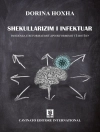Log-linear, logit and logistic regression models are the most common ways of analyzing data when (at least) the dependent variable is categorical. This volume shows how to compare coefficient estimates from regression models for categorical dependent variables in three typical research situations: (i) within one equation, (ii) between identical equations estimated in different subgroups, and (iii) between nested equations. Each of these three kinds of comparisons brings along its own particular form of comparison problems. Further, in all three areas, the precise nature of comparison problems in logistic regression depends on how the logistic regression model is looked at and how the effects of the independent variables are computed. This volume presents a practical, unified treatment of these problems, and considers the advantages and disadvantages of each approach, and when to use them, so that applied researchers can make the best choice related to their research problem. The techniques are illustrated with data from simulation experiments and from publicly available surveys. The datasets, along with Stata syntax, are available on a companion website.
Table of Content
Chapter 1. Introduction
Chapter 2. Regression Models for A Dichotomous Dependent Variable
Chapter 3. Interpreting And Comparing Effects Within One Equation
Chapter 4. Comparing Subgroups Or Time Points: Investigating Interaction Effects
Chapter 5. Causal Modeling: Estimating Total, Direct, Indirect And Spurious Effects; Using Effect Coefficients From Different (Nested) Equations
Chapter 6. Concluding Remarks; Extensions, Effect Measures And Evaluation












